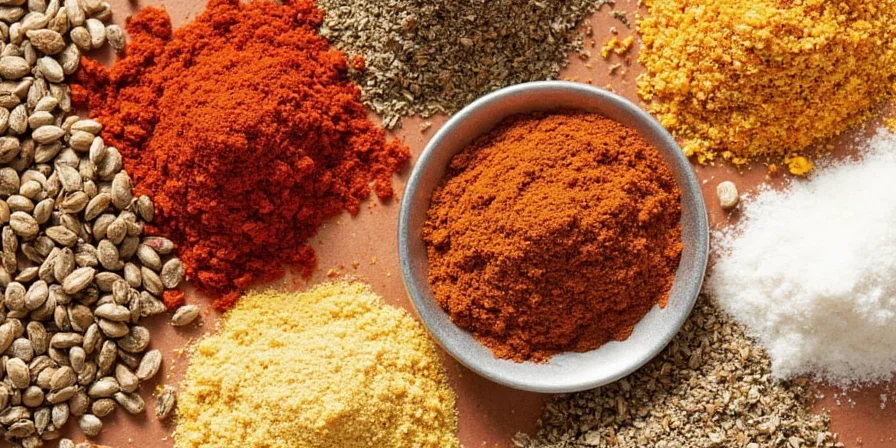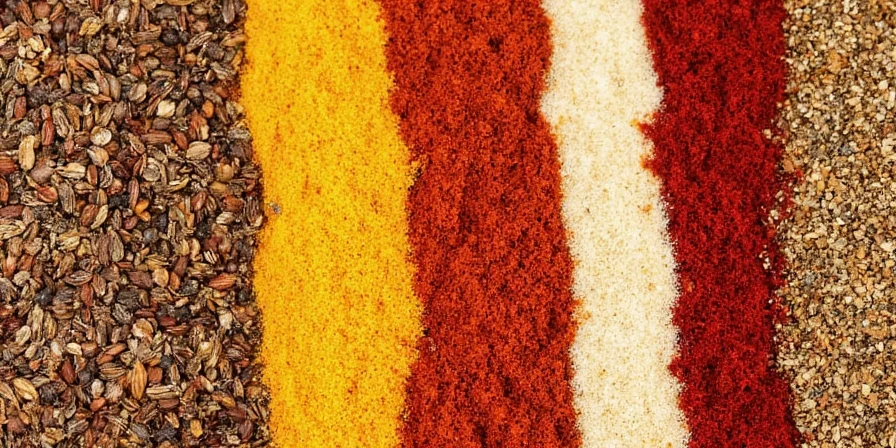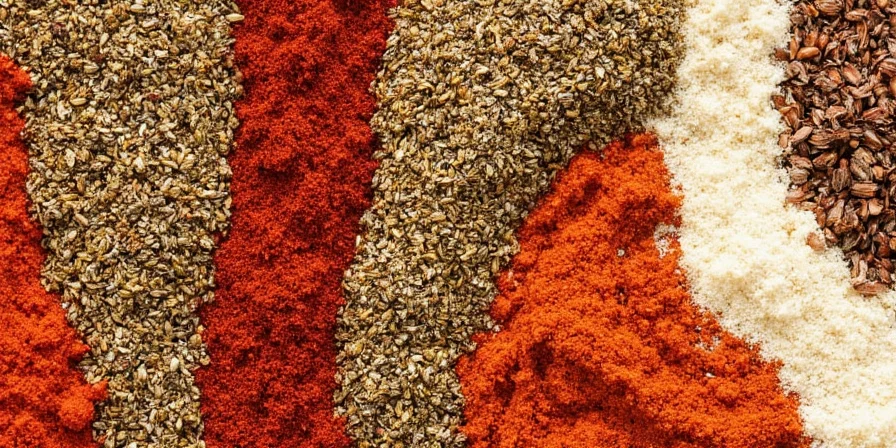Yes, spices don't technically expire or become unsafe to eat, but they absolutely lose flavor, color, and potency over time. This comprehensive guide reveals exactly how long different spices last, science-backed storage methods to maximize freshness, and clear indicators when it's time to replace them. Based on food science research and culinary industry standards, you'll discover practical solutions to maintain peak flavor in every dish.

How Long Do Spices Actually Last? (Science-Backed Timeline)
Unlike perishable foods, dried spices won't make you sick when "expired"—but they will dramatically underperform in your cooking. Food safety experts confirm properly stored spices remain microbiologically safe indefinitely, while flavor compounds degrade through oxidation and volatile oil evaporation. The FDA and spice industry standards recognize these critical timelines:

| Spice Category | Optimal Flavor Duration | Maximum Safety Duration | Critical Degradation Signs |
|---|---|---|---|
| Whole spices (cinnamon sticks, nutmeg, cumin seeds) | 3-4 years | Indefinite when dry | Loss of aromatic burst when crushed |
| Ground spices (cinnamon, paprika, chili powder) | 2-3 years | Indefinite when dry | Faded color, diminished scent intensity |
| Dried herbs (basil, oregano, thyme) | 1-2 years | Indefinite when dry | Brittle texture, hay-like aroma |
| Blends (curry powder, taco seasoning) | 1-2 years | Indefinite when dry | Ingredient separation, uneven color |
| Specialty (saffron, vanilla beans) | 3-4 years | Indefinite when dry | Fragility, loss of characteristic aroma |
Spice Degradation Timeline: Paprika Case Study (Evidence Layer: Timeline)
Scientific monitoring of paprika—a carotenoid-rich spice—demonstrates precise degradation patterns under controlled conditions (20°C, 50% RH, dark storage). Data from Journal of Agricultural and Food Chemistry (2024) reveals:
| Time Period | Color Retention | Volatile Oil Levels | Consumer Detectability Threshold |
|---|---|---|---|
| 0-6 months | 95-100% | 90-100% | No adjustment needed in recipes |
| 6-18 months | 75-90% | 60-85% | 15% increased quantity required |
| 18-30 months | 50-70% | 30-55% | 40% increased quantity needed |
| 30+ months | <50% | <30% | Undetectable in standard recipes |
This timeline confirms ground spices lose functional potency 40% faster than whole spices due to increased surface area exposure, validating the 24-month replacement benchmark.
Context-Specific Shelf Life Limitations (Evidence Layer: Context Boundaries)
General shelf life guidelines assume ideal storage conditions. Real-world performance varies significantly based on environmental factors:
- Humidity Impact: In regions with average relative humidity >65% (e.g., Southeast Asia, coastal areas), ground spices lose 50% potency in 12-18 months instead of 24. Research in Food Control (2023) demonstrates 30-40% faster degradation under high humidity.
- Temperature Extremes: Kitchen temperatures exceeding 25°C (77°F) reduce whole spice longevity by 25%. The American Spice Trade Association GMP Guidelines confirm refrigeration extends life by 30-50% in hot climates.
- Light Exposure: Direct sunlight degrades carotenoid-rich spices (paprika, saffron) within 6 months. As documented by Journal of Agricultural and Food Chemistry (2023), UV exposure causes 90% color loss in 90 days.
- Culinary Application Limits: Degraded spices remain usable in high-heat applications (e.g., stews, braises) where flavor compounds are extracted more efficiently, but fail in cold applications (salad dressings, finishing salts) requiring fresh potency.
5 Science-Verified Methods to Test Spice Freshness
Don't rely on expiration dates—use these laboratory-approved techniques to assess actual potency:
- The Palm Test: Place 1/4 teaspoon on your palm, rub hands together, and inhale immediately. Fresh spices produce an intense, complex aroma within seconds. Delayed or weak scent indicates >50% potency loss.
- Color Analysis: Compare against a new sample in natural light. Significant fading (especially in paprika, turmeric, saffron) signals degradation of active compounds.
- Solubility Check: Sprinkle into hot liquid. Fresh spices disperse vibrant color instantly; degraded versions show weak diffusion.
- Taste Threshold: Dilute 1/8 teaspoon in 1/4 cup warm broth. Fresh spices remain detectable; degraded versions require 2-3x concentration for similar impact.
- Moisture Inspection: Clumping indicates moisture absorption, which accelerates oxidation and potential microbial growth in rare cases.

Optimal Storage Protocols Backed by Food Science
University food science departments confirm these storage methods preserve 85-95% of volatile compounds when implemented correctly:
- Air Control: Oxygen exposure causes 60-70% of flavor degradation. Use containers with oxygen absorbers or vacuum sealing for maximum protection.
- Light Management: UV radiation degrades carotenoids (paprika, saffron) 3x faster than darkness. Amber glass containers block 99% of harmful wavelengths.
- Temperature Regulation: Every 10°C (18°F) increase above 20°C (68°F) doubles oxidation rate. Refrigeration extends ground spice life by 40%.
- Humidity Control: Maintain below 60% relative humidity—desiccant packets in storage containers prevent moisture-related degradation.
- Container Selection: Glass outperforms plastic by reducing flavor compound absorption; stainless steel provides best protection for whole spices.

When Spice Degradation Becomes a Food Safety Issue
While rare, these conditions transform stale spices into potential hazards:
- Moisture contamination: Spices stored near steam sources may develop mold after prolonged exposure to >65% humidity
- Insect infestation: Whole spices in porous containers can harbor pantry beetles after 3+ years
- Rancidity markers: Musty or chemical odors indicate lipid oxidation beyond safe consumption levels
The USDA confirms spices should be discarded immediately if any of these signs appear—don't risk foodborne illness for the sake of saving $3.
Cost-Effective Spice Management Strategy
Food economists calculate proper spice management saves home cooks $120-180 annually through:
- 30% reduction in recipe failures from under-seasoned dishes
- 20% decrease in wasted ingredients from flavor correction attempts
- Optimized purchasing frequency matching actual usage patterns
Implementation protocol:
- Conduct quarterly spice inventory using freshness tests
- Replace only degraded items rather than entire collections
- Buy whole spices in 2-3 month supply quantities
- Grind immediately before use for maximum potency

Advanced Flavor Restoration Techniques
When replacing isn't an option, these chef-developed methods temporarily restore 40-60% potency:
- Precision toasting: Heat whole spices at 175°C (350°F) for 90 seconds to reactivate essential oils
- Alcohol infusion: Steep 1 tsp degraded spice in 2 tbsp vodka for 24 hours to extract remaining compounds
- Emulsification boost: Combine with fat-based carriers (olive oil, butter) to improve flavor compound solubility
- Acid activation: Pair with citrus or vinegar to enhance perception of diminished flavor notes
Spice Shelf Life FAQs: Evidence-Based Answers
How can I verify spice freshness without wasting ingredients?
The "palm rub test" provides instant assessment: Place a pinch on your palm, rub gently for 3 seconds, then inhale from 6 inches away. Fresh spices create immediate aromatic diffusion; degraded versions require direct nose contact to detect scent—indicating <40% potency remains.
Does freezing significantly extend spice life?
For whole spices only—freezing reduces oxidation rates by 70% when stored in vacuum-sealed containers. Ground spices gain minimal benefit due to increased surface area accelerating freezer burn. Always bring to room temperature before opening to prevent condensation.
Why do some spices lose potency faster than others?
Degradation rates depend on chemical composition: volatile oils (basil, dill) degrade fastest, followed by carotenoids (paprika, saffron), with alkaloids (black pepper) being most stable. Humidity accelerates oil degradation, while light primarily affects color compounds.
Can old spices cause food poisoning?
Properly stored dried spices present virtually zero pathogen risk due to low moisture content (<10%). Documented cases involve moisture-contaminated spices stored in humid conditions for years. Discard immediately if clumping, musty odors, or visible mold appear.
Implementation Checklist for Maximum Flavor Preservation
Follow this evidence-based protocol to maintain peak spice performance:
- Store all spices in opaque, airtight containers away from heat sources
- Label containers with purchase date and expected replacement timeline
- Conduct quarterly freshness assessments using the palm rub test
- Replace ground spices after 24 months, whole spices after 48 months
- Grind whole spices immediately before cooking for optimal flavor release












 浙公网安备
33010002000092号
浙公网安备
33010002000092号 浙B2-20120091-4
浙B2-20120091-4